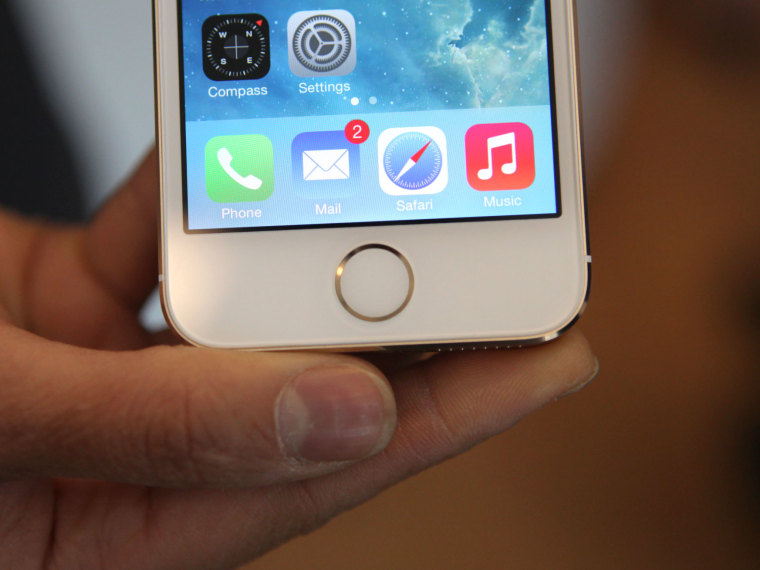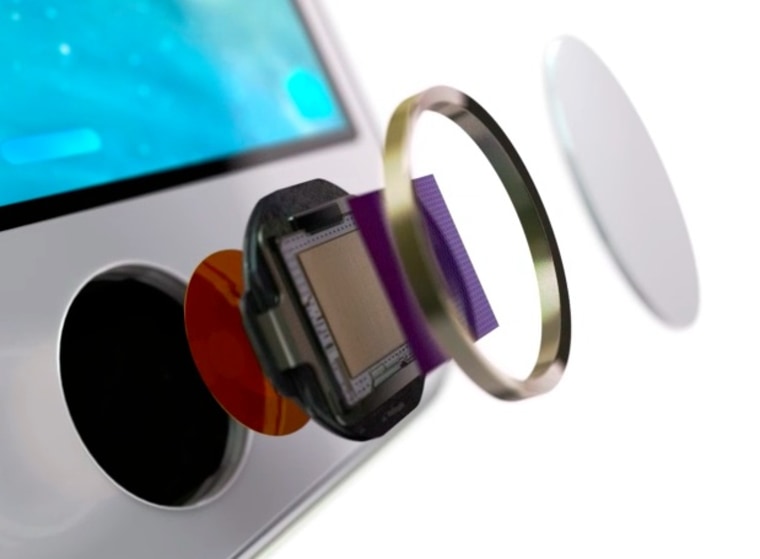
Apple's iPhone 5S, announced Tuesday, will come with a powerful new security feature called Touch ID, a fingerprint scanner built right into the home button. You won't have to type in a PIN on your phone ever again — and apparently, many people weren't doing it to begin with.
As we've gone from checking our phones a couple times a day to every few minutes, the inconvenience of having to type in a passcode, or PIN, has gone from trivial to truly annoying — but what's the alternative, just leave your phone unlocked?
For some people, the answer has been "yes." Apple estimates only about half of iPhone users take advantage of the existing passcode system. And that means that a new iPhone is a tempting target for a thief; with no passcode, a quick factory reset and a new SIM card means an iPhone can easily be converted into a few hundred bucks via Craigslist or a pawn shop.
It's such a common crime for high-end smartphones that it has a nickname, "Apple picking," and task forces have been organized to handle the high volume of lost and stolen phones. Samsung and other phone makers have begun to take the problem seriously, and could introduce improved security measures in their phones that discourage thievery or at least make it less profitable.
Apple's got the jump on them: on the iPhone 5S, your password will be your thumbprint. And it will entered automatically when you hit the home button, so there's no reason to skip the step — which means thieves might be a bit more cautious about snatching your phone.

The designers made it work by sandwiching an ultra-thin sensor underneath the surface of the home button, which is now made of super-hard sapphire glass and lacks the familiar square home icon. Instead, a metal ring surrounds the button — more in keeping with iOS 7's rounded design.
The button detects when you put your thumb on it, and the scanner looks through the glass to observe the loops and whorls that make your fingerprint unique.
NBC News Technology & Science Editor Wilson Rothman did some brief hands-on tests Tuesday, and the scanner worked quickly and well, and while it occasionally rejected the "right" print, it never accidentally recognized a "wrong" print.
You have to "train" it first, however, by letting it scan your finger from several angles. You can do your thumb, your index finger, or both — or let your spouse or kid scan their fingers to give them password-less access to your phone.
But fingerprint scanners aren't exactly new, and it's possible to fool them — with a print lifted from any item you've touched and recreated in silicone, for instance (although that's certainly a lot of effort to get into one phone). And if someone else has your prints, it's not like you can go into the settings menu and change them.
Software security firm Lookout warns that that people who really want to protect their data will want multiple layers of protection: a fingerprint, sure, but also a password, and the ability to lock down the phone if it is stolen — just in case.
Whether it really saves time in everyday situations, we'll have to find out when we do our full review. Expect to see that close to the iPhone 5S's release date on Sept. 20.
Devin Coldewey is a contributing writer for NBC News Digital. His personal website is coldewey.cc.